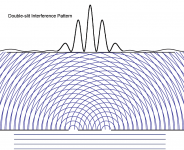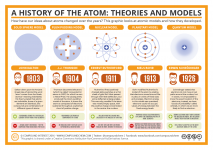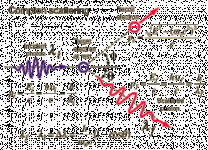If you arrange two detectors one in front of the other, and then behind the furthest detector a slit screen you can observe that if you turn the firs5 detector on, no photon is detected in the second detector and nothing recorded on the screen behind the dual slit. Likewise, you get the same effect if you turn the first detector off and second one on. If you turn both detectors off, you get the interference pattern on the screen behind the dual slit panel.
So it does seem, photons radiate out from their source, but cease to exist in their original form (frequency) as soon as they interact with matter.
So it does seem, photons radiate out from their source, but cease to exist in their original form (frequency) as soon as they interact with matter.
So it does seem, photons radiate out from their source, but cease to exist in their original form (frequency) as soon as they interact with matter.
Seems to me you're talking about reflection/refraction and possible bending caused by gravity wells and/or various types of radiation?
Physics - Viewpoint: Light Bends Itself into an Arc
Bonsai is talking about quanta and how their wave function vanishes when they are detected.
A travelling electron may be thought of as a 'probability wave', meaning that there is only a probability of finding the electron at any given position.
However, once the electron interacts with a detector, the probability wave vanishes and the position of the electron becomes certain.
It's a bit like rolling a die. While it is rolling there are six possible outcomes, all equally probable.
But when the die comes to a rest five of the possibilities instantly vanish and the final outcome becomes certain.
A travelling electron may be thought of as a 'probability wave', meaning that there is only a probability of finding the electron at any given position.
However, once the electron interacts with a detector, the probability wave vanishes and the position of the electron becomes certain.
It's a bit like rolling a die. While it is rolling there are six possible outcomes, all equally probable.
But when the die comes to a rest five of the possibilities instantly vanish and the final outcome becomes certain.
I guess the electron while travelling is using this probability wave to sense where it can possibly go.
Sensing wether there are two slits ahead.
Sensing wether there are two slits ahead.
I wonder if it’s more deterministic than that Galu ?
I envision a photon as an expanding shell or spheroid radiating out from its source that ceases to exist as soon as it interacts with matter. So, although it potentially can be seen in an infinite number of locations on the surface of its spheroid, it instantly ceases to exist in all places once it interacts with matter.
This would imply that in the act the act of ceasing to exist, there is no time difference between the points on the photon’s spheroid. This makes sense from a relativistic POV since a photon travels at c and therefore cannot experience the passage of time.
I envision a photon as an expanding shell or spheroid radiating out from its source that ceases to exist as soon as it interacts with matter. So, although it potentially can be seen in an infinite number of locations on the surface of its spheroid, it instantly ceases to exist in all places once it interacts with matter.
This would imply that in the act the act of ceasing to exist, there is no time difference between the points on the photon’s spheroid. This makes sense from a relativistic POV since a photon travels at c and therefore cannot experience the passage of time.
That's a excellent description.I envision a photon as an expanding shell or spheroid radiating out from its source that ceases to exist as soon as it interacts with matter. So, although it potentially can be seen in an infinite number of locations on the surface of its spheroid, it instantly ceases to exist in all places once it interacts with matter.
The wave function that describes the motion of a quantum through space may be considered as a plane (or spherical?) wavefront.
This wavefront interferes with itself after passing through the double slits, forming the probability amplitude wave that is characteristic of an interference pattern (see top of attached diagram).
On reaching the detection screen, the probability wave vanishes and the quantum will be detected in one of the possible locations permitted by the probability amplitude distribution.
As successive quanta are emitted from the source, the full blown interference pattern gradually builds up on the screen.
Attachments
I hope my explanation above is getting closer to a layman's model of what happens when an electron wave passes through two slits simultaneously.I guess the electron while travelling is using this probability wave to sense where it can possibly go.
Sensing wether there are two slits ahead.
Of course, this is just my attempt to 'simplify' matters. The quantum world is much more complex than I, a mere mortal, can hope to understand! 🙂
Having skimmed through the article, I doubt very much that I could discuss the topic!Seems to me you're talking about reflection/refraction and possible bending caused by gravity wells and/or various types of radiation?
Physics - Viewpoint: Light Bends Itself into an Arc
😕"The force-free Schrödinger equation could give rise to solutions in the form of nonspreading “Airy” wave packets: specially shaped beams of light that do not diffract over long distances but can bend (or, self-accelerate) sideways."
Black holes are transfering some energy from a location to another location, black or white is an immaginary delirium generated by our perception and limits (human vision).
I really don't uderstand why a lot of people see the world as a blank drawing that have to be colorized, it seems childish.
I really don't uderstand why a lot of people see the world as a blank drawing that have to be colorized, it seems childish.
Note if the photon emitter sends out single photons, and you let the emitter run for a few hours, the interference pattern will build up over time in the form of vertical strips of dots, with the densist concentration towards the centre. This happens because the individual photons are interacting with the electrons on the plate that sits behind the dual slit screen. If you just have a light source of course then there’s a huge quantity of photons passing through the slits, so it just manifests as a pattern on the plate.
One of the rites of passage of a child is to satisfactorily complete a colouring book! 🙂I really don't uderstand why a lot of people see the world as a blank drawing that have to be colorized, it seems childish.
However, scientists can be a silly lot when when it comes to naming things.
It’s important to remember that a name like 'black hole' is just a title, a way to start explaining things we are only beginning to grasp.
Naming things is a balance between taking ourselves too seriously and not too seriously.
It makes no difference to the physics.In this experiment, electrons are sent to the two slits screen. Not photons.
Electrons and photons can both be referred to as quanta. Both exhibit wave-particle duality and produce an interference pattern when fired at a double slit.
As I said earlier, even molecules have been shown to produce an interference pattern in similar circumstances.
The Yong experiment is much more meaningful with heavy particles, giving results that were already known with photons.
The Physics of the very small cannot be directly experienced by senses that have evolved to help an animal to survive and reproduce. Living sensory cells are huge compared to individual atoms, let alone electrons. A single DNA molecule has about 3 billion base pairs. A rough estimate of the number of atoms in the DNA alone is 200 billion atoms. Together with this, there is another copy DNA accounting for two parents. This adds up to 400 billion atoms for the genetic code alone! The latter is wound up on structures called chromosomes also made up of many more atoms. There are the cell membranes, the cell's internal machinery, the organelles to add to the count. Accounting for all atoms in a single cell can easily exceed 1000 billion atoms. This is far from a single electron, which imply, sensory cells are macroscopic sensors.
So, we have to make an effort and be objective. Quantum mechanical particles have a dual nature which is particle and wave natures combined. It is useless trying to hypothesise without any basis of experimental evidence: that can only lead to logically appealing 'solutions' that often divert from reality. Take for instance, as an example, theories of the Solar System. At first, it was thought, the Earth is at the centre, and it was all wrong, although it was logically plausible.
So, we have to make an effort and be objective. Quantum mechanical particles have a dual nature which is particle and wave natures combined. It is useless trying to hypothesise without any basis of experimental evidence: that can only lead to logically appealing 'solutions' that often divert from reality. Take for instance, as an example, theories of the Solar System. At first, it was thought, the Earth is at the centre, and it was all wrong, although it was logically plausible.
Last edited:
I rather thought that the results of the double slits experiment for electrons (and molecules) was evidence for wave-particle duality.Quantum mechanical particles have a dual nature which is particle and wave natures combined. It is useless trying to hypothesise without any basis of experimental evidence ... Take, for instance, theories of the Solar System.
To progress your argument further, scientific models evolve as new experimental evidence emerges.
Take the model of the atom for instance. It has evolved through several stages which are illustrated by the attachment more efficiently than I could describe them.
P.S. Galileo, who practically invented the scientific method, formulated the heliocentric model of the Solar System in the 17th century. It is interesting to note that it wasn't until 1992 that the Vatican officially declared that Galileo was correct!
Attachments
Last edited:
I wonder if it’s more deterministic than that Galu ?
I envision a photon as an expanding shell or spheroid radiating out from its source that ceases to exist as soon as it interacts with matter. So, although it potentially can be seen in an infinite number of locations on the surface of its spheroid, it instantly ceases to exist in all places once it interacts with matter.
This would imply that in the act the act of ceasing to exist, there is no time difference between the points on the photon’s spheroid. This makes sense from a relativistic POV since a photon travels at c and therefore cannot experience the passage of time.
Reminds me of this stuff from a few years ago.
The short video is well worth watching if you haven't.
Trillion-frame-per-second video | MIT News
The double slit experiment demonstrates the ability of electrons to interfere like waves. There are other experiments, even with a single slit, which agree with intensity profiles that are expected from an incident wave.Galu said:I rather thought that the results of the double slits experiment for electrons (and molecules) was evidence for wave-particle duality.
The wave-particle duality has other corroborates, like the Compton Scattering Effect. A photon collides with an electron with the result a new photon is emitted at a lower quantum of energy. I remember myself during a Physics exam replying to a question asking for the derivation of the Compton formula. Don't ask me to do it now, it has been about 30 years ago, and my memory leaks with the passage of decades.
I remember, the derivation is based on the conservation of momentum for the electron and photon as in a collision. The conservation of momentum is used to form equations for two perpendicular resolutions of all the momentum components. There is also the application of the principle of conservation of energy which yealds another equation. So, one ends with three equations. Elimination of the not-required variables, results in the Compton formula.
Hopefully, I remembered, the skeleton of the derivation.
Yes, I remember studying Compton scattering all those moons ago!The wave-particle duality has other corroborates, like the Compton Scattering Effect. A photon collides with an electron with the result a new photon is emitted at a lower quantum of energy.
During the collision, the target electron gains kinetic energy from the incident photon which becomes one of a longer wavelength.
The photon has therefore lost energy in accord with quantum theory which predicts that the energy of a photon is inversely proportional to its wavelength.
The Compton effect proves that photons have energy and momentum just as material particles do.
Let's not get into the mathematics - that was never my strong point - one look at the equations in the attachment is sufficient for me these days! 😉
Attachments
Interesting, puts me in the mood for a bottle of light beer!The short video is well worth watching if you haven't. Trillion-frame-per-second video | MIT News
And I understand why they call it the streak camera!
YouTube
- Home
- Member Areas
- The Lounge
- black holes and white holes


